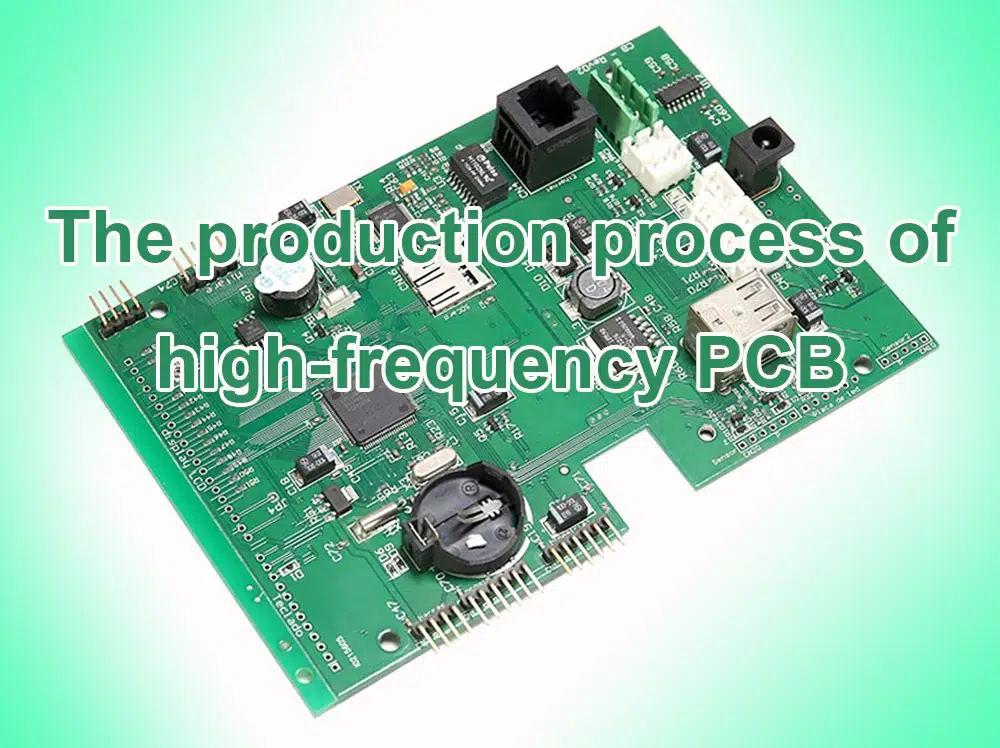Now many electronic products have begun to involve high-frequency circuits, and high-frequency PCBs have gradually been use in many fields. High frequency PCB is a circuit board specialized for transmitting high frequency signals. Compared with ordinary PCB, high-frequency PCBs have higher performance and more complex manufacturing processes, and the following article will discuss in detail the difference between high-frequency circuit boards and ordinary circuit boards.
The definition of PCB
A PCB, also known as a printed circuit board, combing electronic components, circuits and PCB boards. In layman’s terms, it is the thin printed circuit board seen on electronic products.
The difference between high-frequency PCB and ordinary PCB
The materials are different
High-frequency PCB differs from ordinary CB in material. Materials of high-frequency PCB require low dielectric constant and dithermary coefficient to reduce losses and errors in signal transmission. More common materials include PTFE, FR-4, PPO, etc., while common materials for ordinary PCBs are FR-4, CEM-1, CEM-3, etc.
The production process is different
The production process of high-frequency PCB is relatively complex, requiring high-precision, high-stability processing equipment and a perfect quality control system. It is usually necessary to control the ambient temperature, humidity and other parameters to ensure the consistency of the manufacturing process. Ordinary PCBs, on the other hand, are relatively simple and the manufacturing process is easier to control.
The circuit design is different
The circuit design of high-frequency PCB is also different. High-frequency PCBs require high precision, low distortion, low noise and other performance, so they are more demanding in terms of wiring, impedance matching, signal layer stacking, etc. Ordinary PCBs generally do not need to consider these problems.
Performance is different
There is also a big difference in the performance of high-frequency PCB and ordinary PCB. The high-frequency PCB has better high-frequency performance, which can maintain stable signal quality and low signal distortion rate during high-speed signal transmission. In addition, the high-frequency PCB also has better anti-interference and electromagnetic compatibility, which can effectively reduce the impact of external interference on the circuit. Ordinary PCBs, on the other hand, are usually only suitable for low-frequency signal transmission, and their performance is relatively weak.
The application is different
High-frequency PCBs are generally used in high-performance fields such as high-frequency signal processing, microwave antennas, satellite communications, and RF medical equipment. Ordinary PCBs are widely used in various electronic products.

The production process of high-frequency PCB
Create circuit drawings and BOM (Bill of Materials).
Complete schematic design, generate drilling files and other manufacturing files.
PCB design is done through CAD (Computer Aided Design) software.
Through CAM (Computer Aided Manufacturing) software to generate wiring harness diagrams, layout diagrams, inner layer drawings, etc.
Pre-treatment: including each layer of copper foil placement, perforation, coating copper foil, etc.
Inner layer circuit: various copper pressing, lamination, bonding and other processes to form the line of the inner layer.
Forming: Combining each layer of copper foil, inner wiring, outer wiring and other parts.
Finished product processing: including cutting, tin dipping, polishing, surface treatment, etc.

Conclusion
High-frequency PCB is a special type of circuit board, compared with ordinary PCB, high-frequency PCB is different in materials, production processes, circuit design and application scenarios, and the production cost is relatively high. With the continuous development of electronic technology, the application scenarios of high-frequency PCBs are also expanding, becoming an important part of various high-performance electronic devices.










